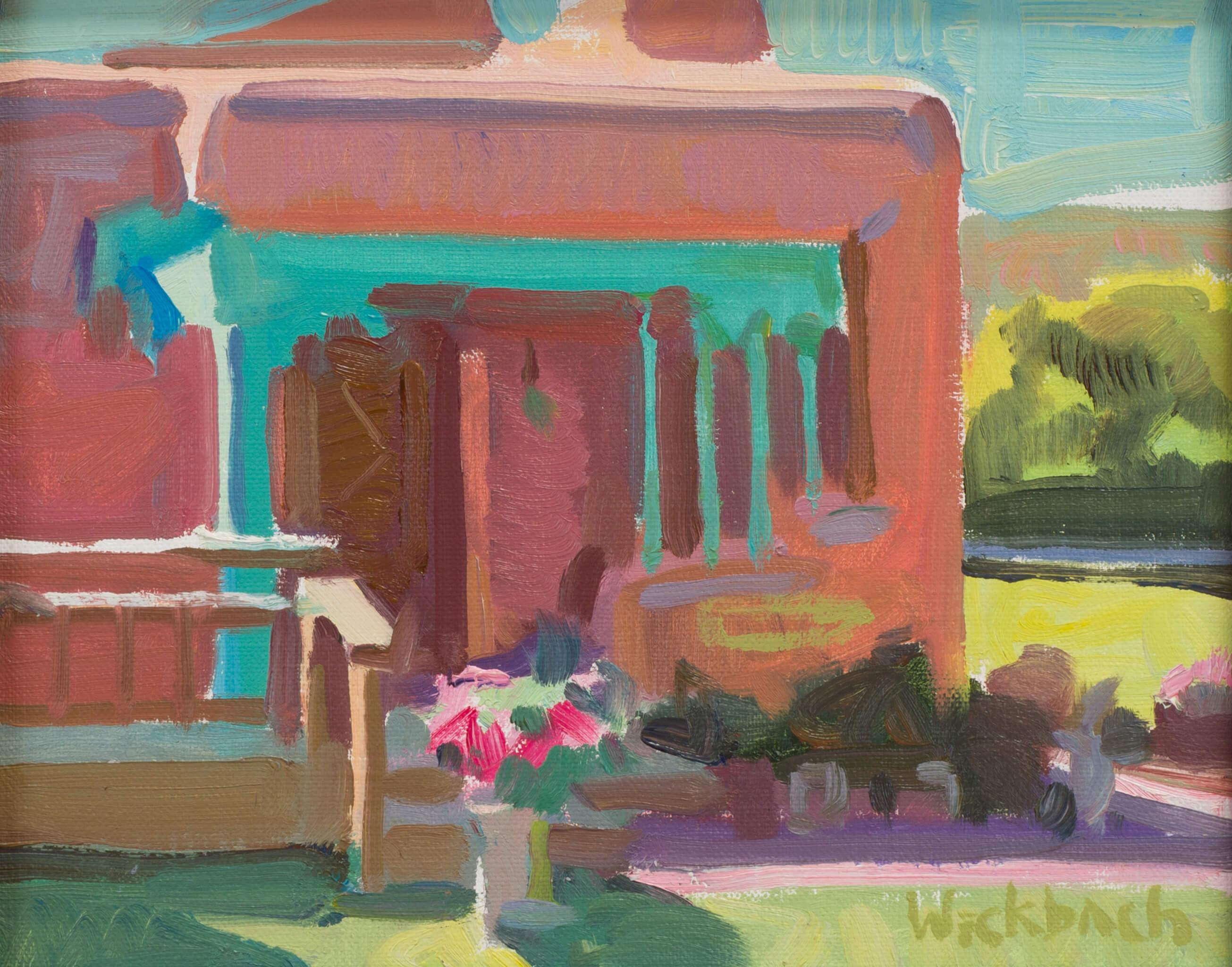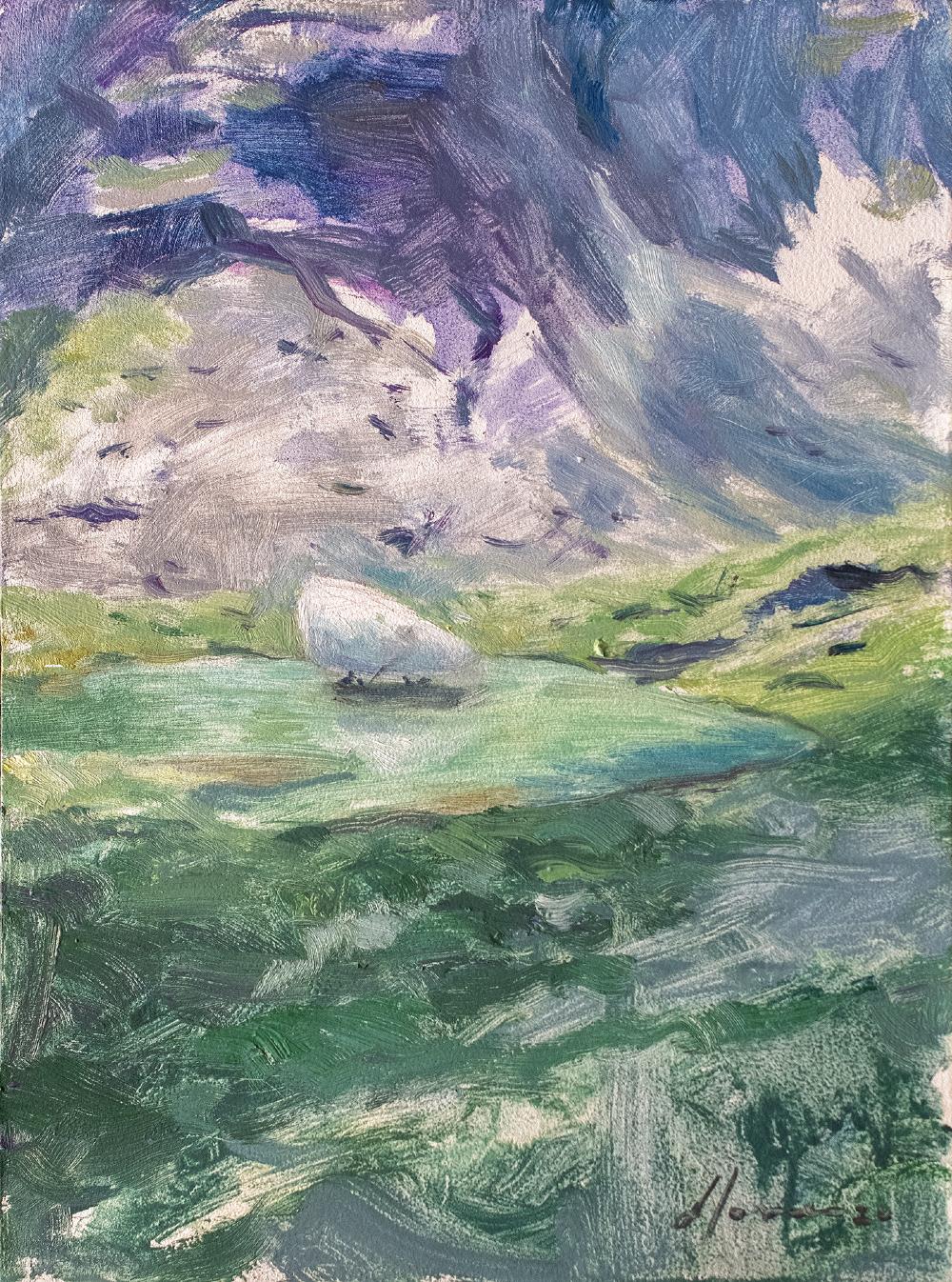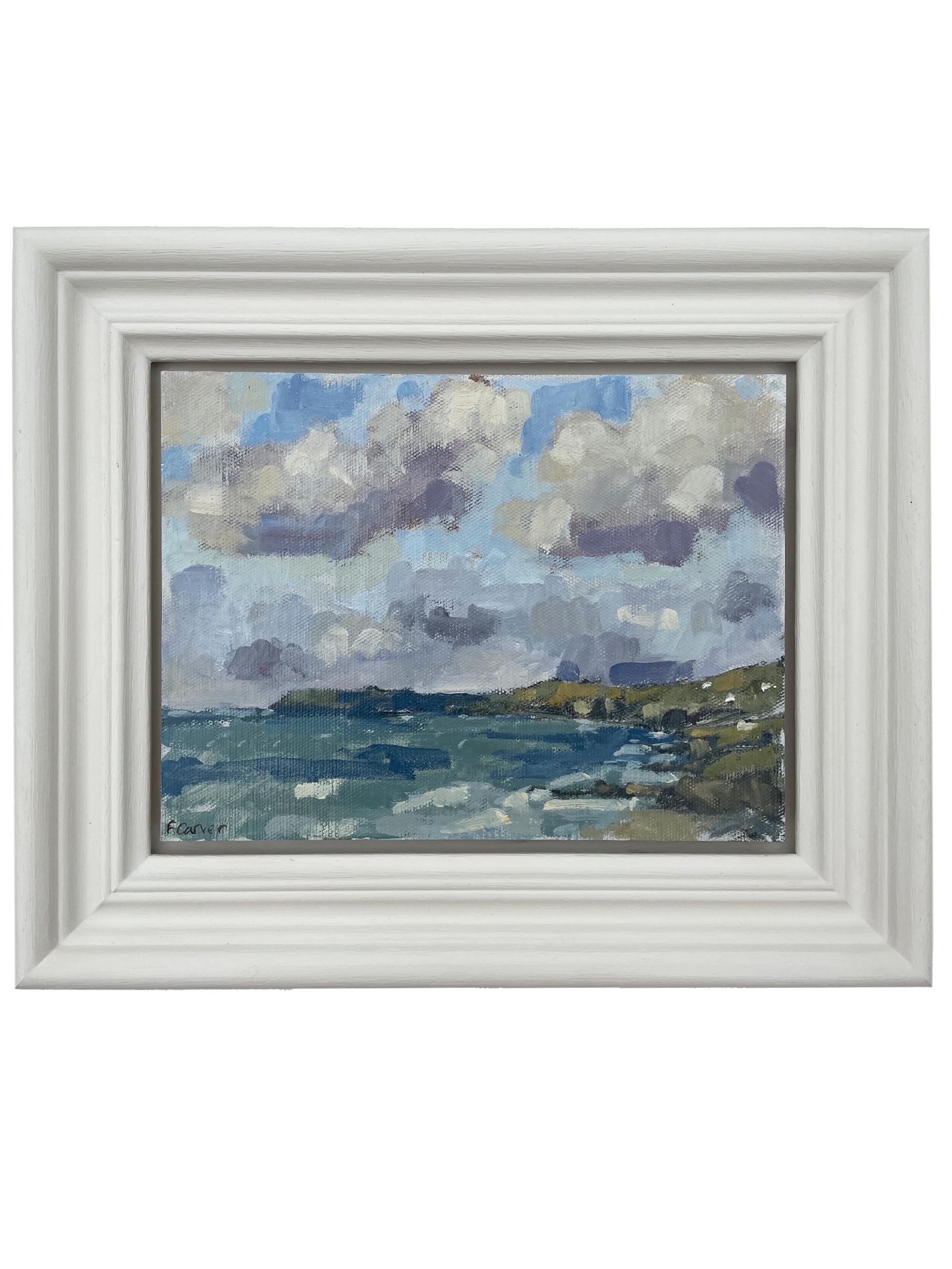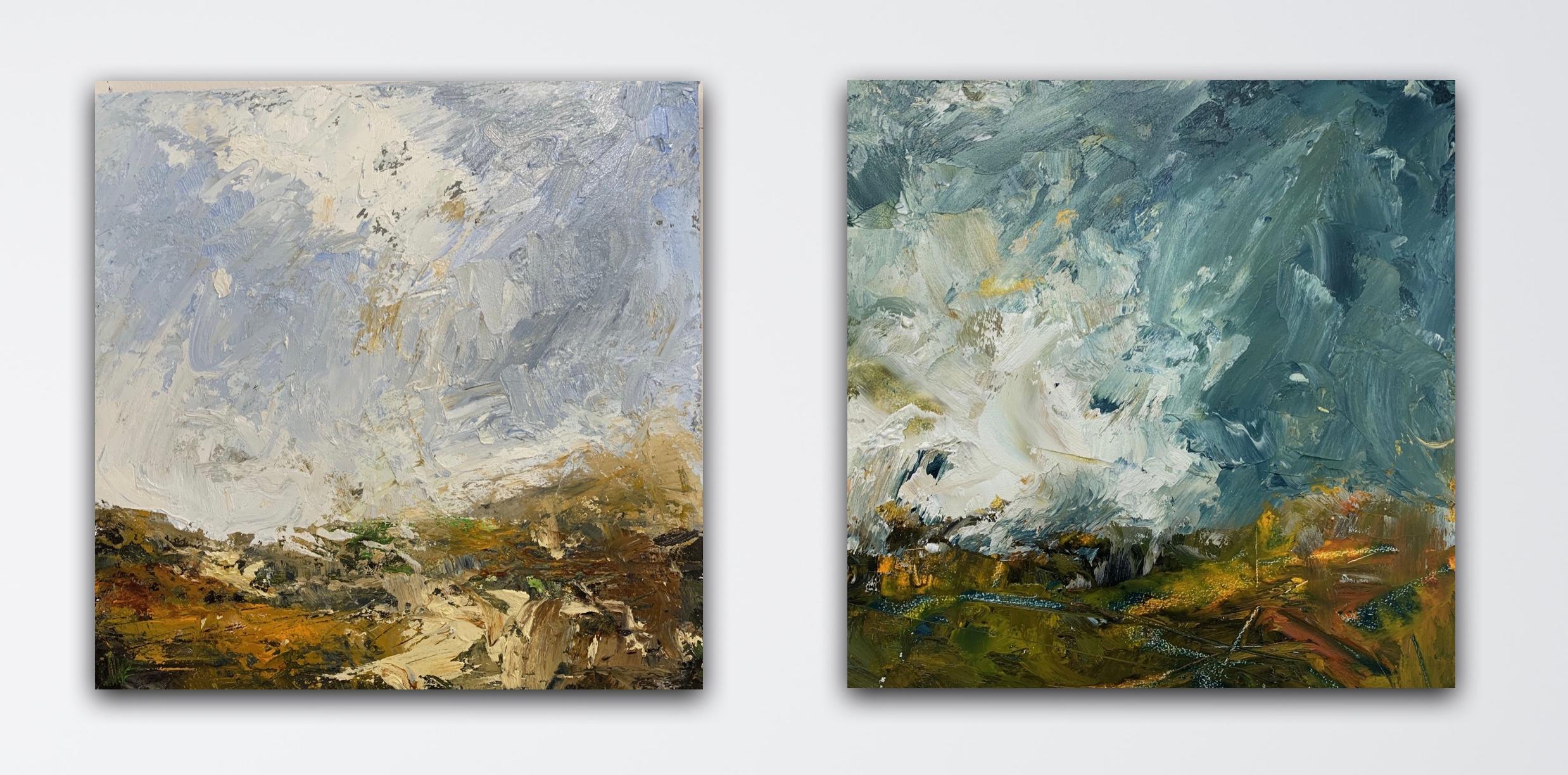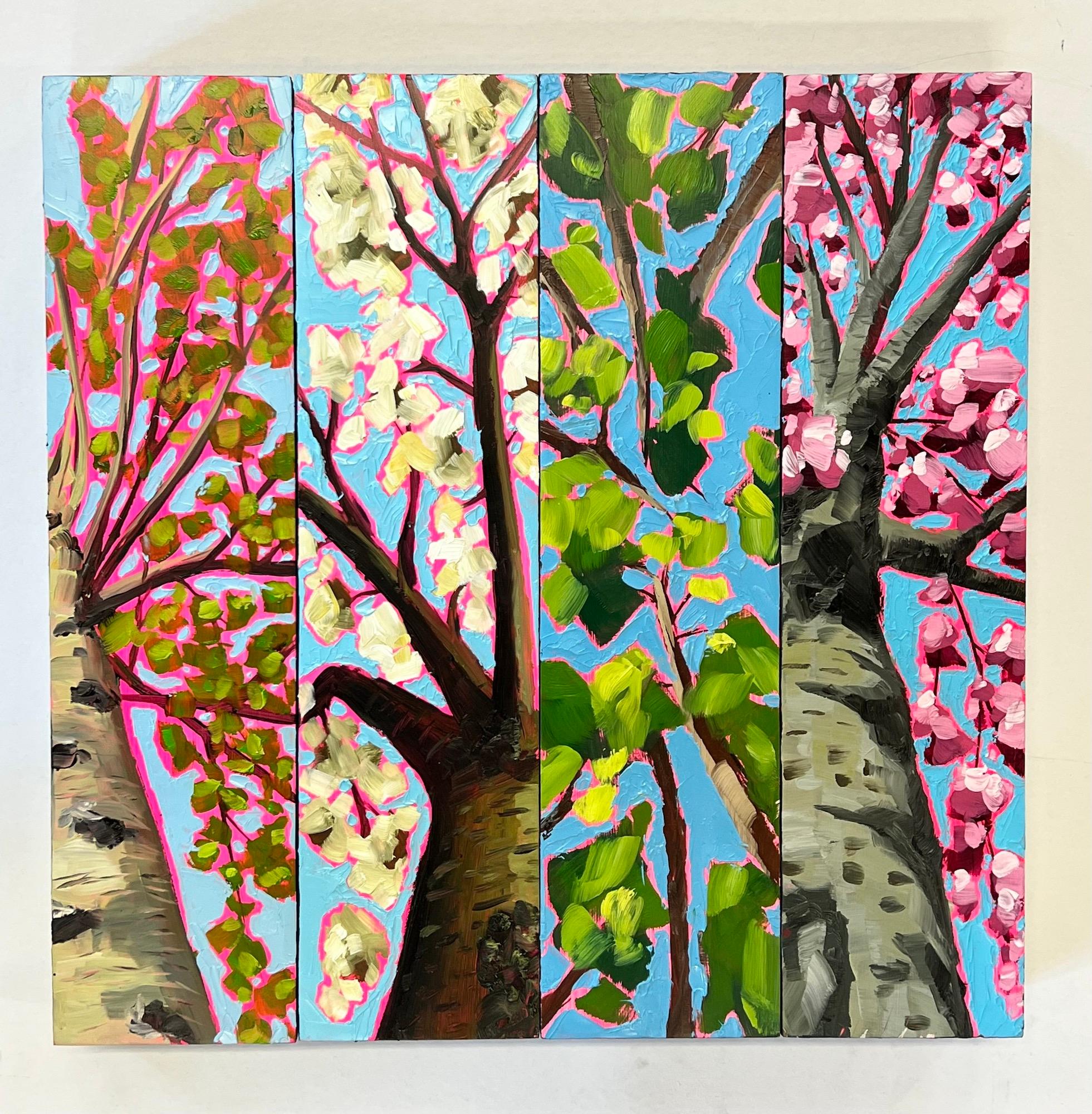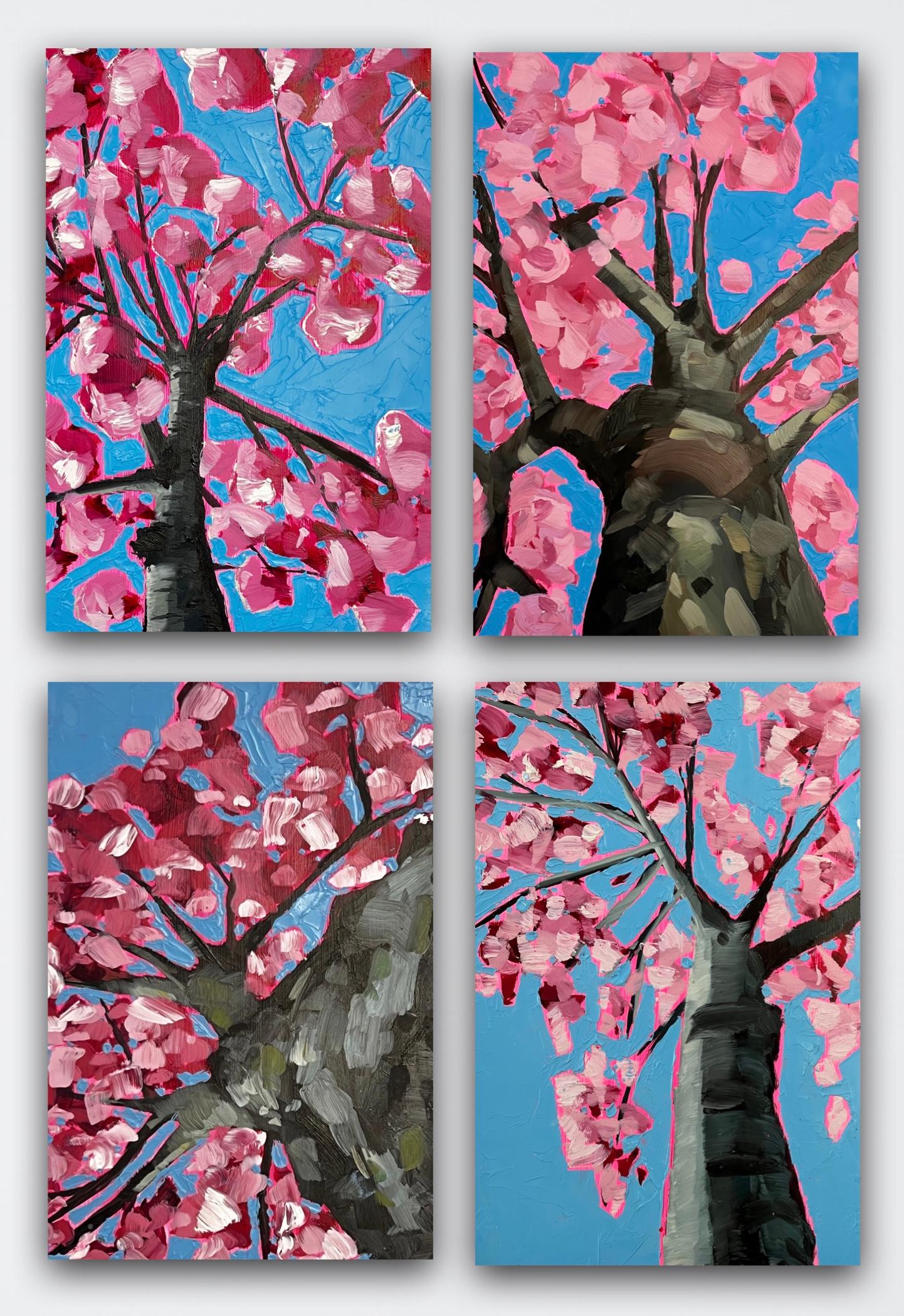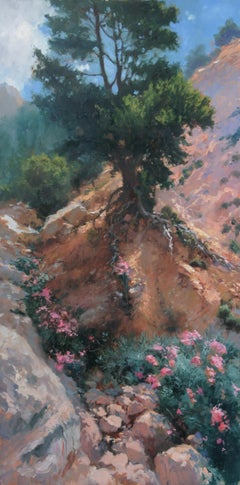
The Heat of the Day
View Similar Items
1 of 5
Michael AlfordThe Heat of the Day
About the Item
- Creator:Michael Alford (1958, British)
- Dimensions:Height: 40 in (101.6 cm)Width: 20 in (50.8 cm)
- Medium:
- Movement & Style:
- Period:
- Condition:
- Gallery Location:London, GB
- Reference Number:Seller: PHR391stDibs: LU110226302532
You May Also Like
- L’embarquement by Gaston La ToucheBy Gaston La ToucheLocated in New Orleans, LAGaston La Touche 1854 - 1913 French L’embarquement The Embarkment Signed "Gaston La Touche" (lower right) Oil on panel A fashionable group of merrymakers boards a rowboat at sundown in this oil on panel by renowned French painter Gaston La Touche. Softly lit and lushly detailed, the work represents the artist’s talent for capturing the gaiety of the Belle Époque. With its luminous coloring and feathery brushwork, this oil evokes the style and joie de vivre of the era rendered in La Touche’s distinctive, mature style. Fresh and airy, the work is a beautiful example of the artist’s skill at capturing the subtle qualities of light and color. Set against the plein air backdrop of a wooded pond awash in the soft glow of the golden hour, the scene reflects the influence of the Impressionists. The subject also recalls works by Manet, Monet and Renoir, who delighted in depictions of modern leisure among the expanding middle class. The scene is an informal one, and its unconventional cropping suggests that the viewer is invited to take a seat in the boat and join the group on their outing. Such relaxed, inviting scenes were remarkably popular among contemporary, modern audiences. However, La Touche's style is singular, possessing an element of fantasy and romance that set him apart from the Impressionists. Gaston La Touche was born in St. Cloud, outside of Paris, in 1854, and he showed a keen interest in art from a young age. At ten years old, he began taking private art instruction, which lasted until 1870, when his family was forced to flee to Normandy amid the Franco-Prussian War. This was the only formal art training La Touche would ever receive. Despite his lack of Academy training, he made his debut at the Paris Salon of 1875 with a sculptural medallion and etchings, and he exhibited his first painting at the Salon of 1881. Although he began his career painting dark-toned realist compositions, by 1890, his style had shifted to what would become his signature — a lighter, brighter, idealistic society world. The artist was associated with practically all of the most influential artists and thinkers of late 19th century France, including Édouard Manet, Edgar Degas, Émile Zola, who frequently met at the legendary Cafe de la Nouvelle Athenes to share their thoughts on modern society. In 1900, he was named a Chevalier of the Legion d'Honneur and an Officer in 1909. Additionally, he was well-decorated at the grand...Category
Late 19th Century Impressionist Figurative Paintings
MaterialsPanel, Oil
- "Gonske' House", Oil PaintingBy Kevin WeckbachLocated in Denver, COKevin Weckbach's (US based) "Gonske' House" is an original, hand made oil painting that depicts an adobe house in Taos with a colorful entrance and blooming flowers in the foreground...Category
2010s American Impressionist Landscape Paintings
MaterialsOil, Panel
- Evan's BarnBy Daniel Warren PinkhamLocated in Pasadena, CAProvenance Acquired by the gallery directly from the artist Artist Statement "Next to our ranch in Idaho sits Evan's Barn. For me, it's a wonderful reminder of dear friends who buil...Category
2010s Impressionist Landscape Paintings
MaterialsCanvas, Oil, Panel
- The Sailor is a 11 x 8" oil Cuban-American Water ImpressionismBy Reynier LlanesLocated in Houston, TXREDUCED FROM $3000 The Sailor is a 11 x 8" oil painting by Cuban-American artist Reynier Llanes who lives in Miami. It is framed. It is oil painted on a wood panel . The Sailor floats in the frame. The background of Reynier Llanes is unique in style , subject matter, and medium. The artist says this about Field of Flight The characters in my paintings emerge from stories and their journeys are inspired by my own experiences and daily routines. My inspiration comes from literature, music, cinema, and daily life. My daily routine enables me to meditate and use my creativity to serve these stories and inspirations. I begin my mornings with sketches and watercolors. This is the time I use to keep inventory of my ideas and to allow them to further inspire me. Many of these characters have been depicted in my work before, whether in a different geographical location or in a different state of their physical evolution. I use a variety of mediums in my work including oils, watercolors, coffee, and charcoal. They are all equally important to me as they allow me full expression, each in its’ own sector. I use a great deal of symbolism in my art to give depth to the subjects that I wish to express. I want my art to tell a story in a manner that stimulates the imaginations of others, especially of things never seen or expressed directly. As an observer it is clear to see that we are all in pursuit of life’s mission of working, loving, and belonging. I begin my paintings by building layers of textures and color values, and then subtly add dimension and depth. Through the use of colors and highlighting I am able to enhance the atmosphere with mood, character, depth and mystery, and bring special attention to my subjects. It is the creative process of using these materials and methods that feed my soul, life, and being. I believe it is our mission as intellectuals to have a voice in our society, for our work to have a footprint in history, and to be a reference for future generations. BIO: Reynier Llanes was born in Pinar del Rio, Cuba in 1985. He attended the city’s school of art (Instructores de Arte) for four years and completed his studies in 2004. Llanes was tutored by one of the country’s most recognized realist artists, Juan Miguel Suárez. In 2005 he moved to Havana where he continued his studies and collaborated with various artists. The capital was a thriving mecca of art and culture and the museums the grounds for inspiration. In 2007 LIanes availed himself of an opportunity to emigrate from Cuba and moved to the United States, first settling in Naples, FL. In Naples he began to introduce his work in a major exhibition entitled “Strange Visitor” at the Kapo Maestro Gallery. In 2009 he relocated to Charleston, SC where he had the honor of being granted an artist in residency at the Jonathan Green Studios. Llanes was awarded a "first purchase award" for a piece now in the art collection of the city of Charleston 2011 at Moja Art Festival Juried Exhibition Award. In 2012 Oxford America recognized him as one of the "New Superstars of Southern Art." The art of Reynier was nourished by the rich southern culture and he began to collaborate with various museums and art centers. His work was featured in a traveling exhibition The Vibrant Vision Collection at the Morris Museum in Augusta, GA and the Gibbes Museum of Art in Charleston, SC. Llanes is also an avid art collector in his own right, focusing on works by artists from Cuba, and particularly those from his native province of Pinar del Río. A selection of works from his collection was exhibited at City Gallery in Charleston in 2013 and in the Art Museum in Myrtle Beach in 2015. In 2015 Llanes relocated with his family to Miami in order to take advantage of the city’s international art market and vibrant cultural life and to be closer to his home country. South Florida is, of course, home to a large community of intellectuals, collectors, and fellow artists who have welcomed Llanes into their cosmopolitan scene. His first solo exhibition in Miami took place at Miami Dade College West, this exhibition was entitled “Preserving Cultural Heritage” and it featured a large collection of coffee paintings. In 2017 he met Bill Meek...Category
2010s American Impressionist Landscape Paintings
MaterialsWood Panel, Oil
$2,560 Sale Price20% Off - "Up the Valley"By Daniel GarberLocated in Lambertville, NJIn an original Harer frame. Illustrated in "Daniel Garber Catalogue Raisonne" Vol. II, pg. 271, and in book titled "Blue Chips", pg. 33 Jim’s of Lambertville is proud to offer this artwork by: Daniel Garber (1880-1958) One of the two most important and, so far, the most valuable of the New Hope School Painters, Daniel Garber was born on April 11, 1880, in North Manchester, Indiana. At the age of seventeen, he studied at the Art Academy of Cincinnati with Vincent Nowottny. Moving to Philadelphia in 1899, he first attended classes at the "Darby School," near Fort Washington; a summer school run by Academy instructors Anshutz and Breckenridge. Later that year, he enrolled at the Pennsylvania Academy of the Fine Arts. His instructors at the Academy included Thomas Anshutz, William Merritt Chase and Cecilia Beaux. There Garber met fellow artist Mary Franklin while she was posing as a model for the portrait class of Hugh Breckenridge. After a two year courtship, Garber married Mary Franklin on June 21, 1901. In May 1905, Garber was awarded the William Emlen Cresson Scholarship from the Pennsylvania Academy, which enabled him to spend two years for independent studies in England, Italy and France. He painted frequently while in Europe, creating a powerful body of colorful impressionist landscapes depicting various rural villages and farms scenes; exhibiting several of these works in the Paris Salon. Upon his return, Garber began to teach Life and Antique Drawing classes at the Philadelphia School of Design for Women in 1907. In the summer of that same year, Garber and family settled in Lumbertville, Pennsylvania, a small town just north of New Hope. Their new home would come to be known as the "Cuttalossa," named after the creek which occupied part of the land. The family would divide the year, living six months in Philadelphia at the Green Street townhouse while he taught, and the rest of the time in Lambertville. Soon Garber’s career would take off as he began to receive a multitude of prestigious awards for his masterful Pennsylvania landscapes. During the fall of 1909, he was offered a position to teach at the Pennsylvania Academy as an assistant to Thomas Anshutz. Garber became an important instructor at the Academy, where he taught for forty-one years. Daniel Garber painted masterful landscapes depicting the Pennsylvania and New Jersey countryside surrounding New Hope. Unlike his contemporary, Edward Redfield, Garber painted with a delicate technique using a thin application of paint. His paintings are filled with color and light projecting a feeling of endless depth. Although Like Redfield, Garber painted large exhibition size canvases with the intent of winning medals, and was extremely successful doing so, he was also very adept at painting small gem like paintings. He was also a fine draftsman creating a relatively large body of works on paper, mostly in charcoal, and a rare few works in pastel. Another of Garber’s many talents was etching. He created a series of approximately fifty different scenes, most of which are run in editions of fifty or less etchings per plate. Throughout his distinguished career, Daniel Garber was awarded some of the highest honors bestowed upon an American artist. Some of his accolades include the First Hallgarten Prize from the National Academy in 1909, the Bronze Medal at the International Exposition in Buenos Aires in 1910, the Walter Lippincott Prize from the Pennsylvania Academy and the Potter Gold Medal at the Art Institute of Chicago in 1911, the Second Clark Prize and the Silver Medal from the Corcoran Gallery of Art for “Wilderness” in 1912, the Gold Medal from the Panama-Pacific Exposition in San Francisco of 1915, the Second Altman Prize in1915, the Shaw prize in 1916, the First Altman Prize in 1917, the Edward Stotesbury Prize in1918, the Temple Gold Medal, in 1919, the First William A...Category
1940s American Impressionist Landscape Paintings
MaterialsOil, Panel
- Autumn Clouds over the HeadlandBy Fiona CarverLocated in Deddington, GBAutumn Clouds Over the Headland by Fiona Carver [2021] original Work signed by the artist Oil Paint on Linen Panel Image size: H:18 cm x W:24 cm Complete Size of Unframed Work: H:...Category
21st Century and Contemporary Impressionist Landscape Paintings
MaterialsLinen, Oil, Panel

